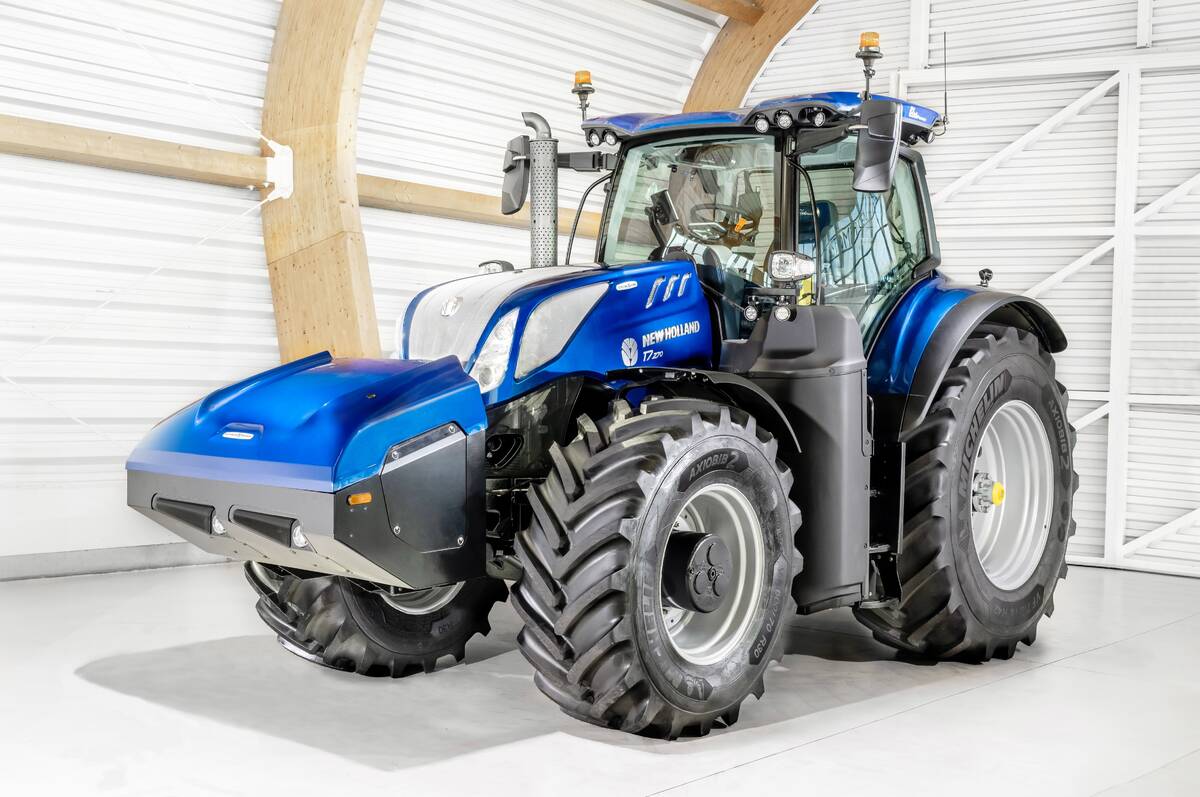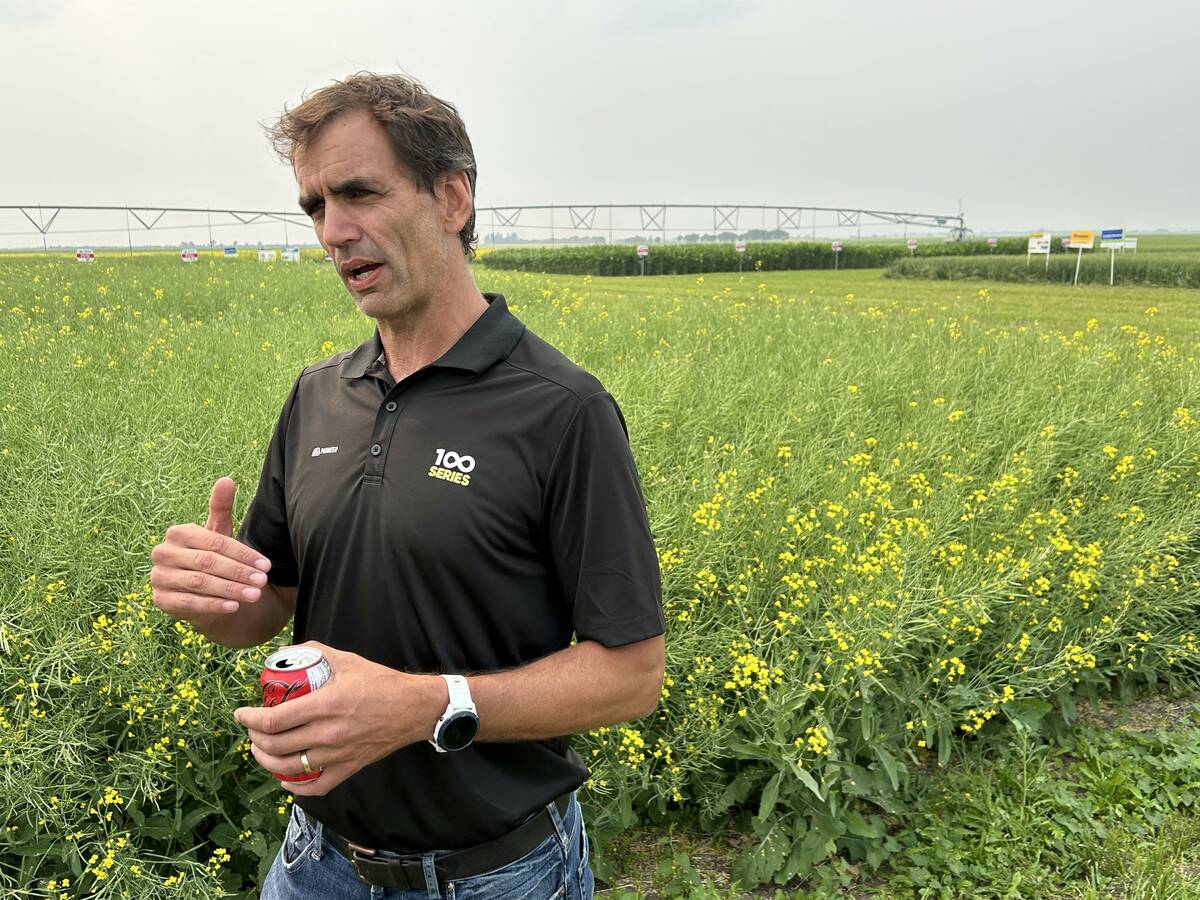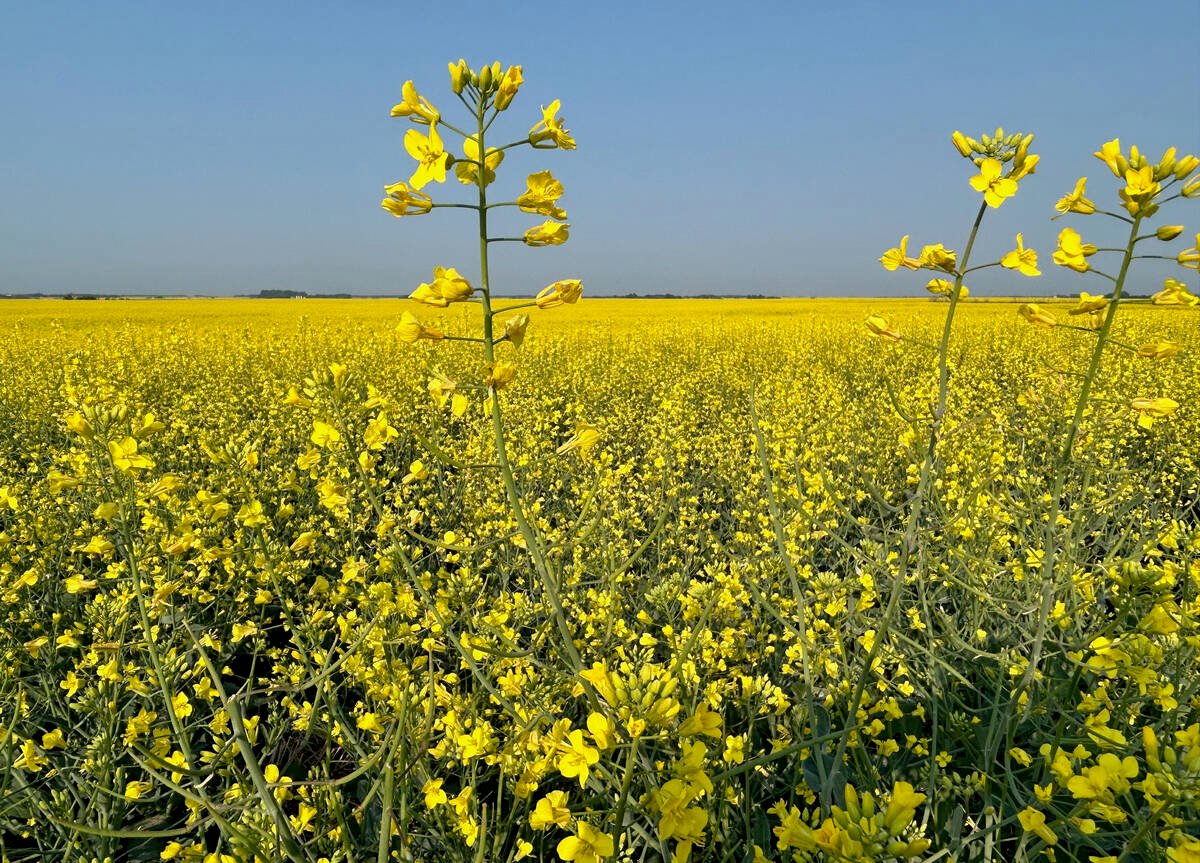WINNIPEG — Millions of acres remain in fields across the Prairies, but it seems likely that Canadian canola yields will set a record in 2025, say agronomists, canola breeders, crop production advisers, landowners and canola industry representatives across Western Canada.
The previous record for canola was set in 2016, when the average yield was 42.3 bushels per acre.
“Fingers crossed here, but I’m thinking we’re going to be above 42 (bu.) this year,” said Chad Koscielny, North American canola breeding lead with Corteva Agriscience.
Read Also

Methane tractor debuts at Agritechnica 2025
New Holland has unveiled its production-ready version of a T7.270 methane-powered tractor at the Agritechnica farm machinery show in Hanover, Germany.
Farmers in multiple regions of the Prairies are posting yields of 50 to 60 bu. per acre, thanks to sufficient rainfall, cooler weather in July and a bloom period that lasted several weeks.
There are geographic pockets with disappointing yields, such as northwestern Saskatchewan and Alberta’s Peace region, but provincial data and anecdotal reports, as of Sept. 29, shows that farmers in many areas are achieving yields that are 15 to 25 bu. higher than 2024.
“(From) some very reliable people that don’t monkey around with the data … 65 to 70 (bu.) around the Kindersley area, which is very high for them,” said Robert Andjelic, who runs Andjelic Land, a company that owns about 250,000 of cropland on the Prairies, mostly in Saskatchewan.
That’s nearly double the canola yields from 2024, with the provincial crop report saying the average yield in west-central Saskatchewan was 34 bu. per acre last year.
Andjelic routinely meets with farmers who lease his land, and he drives tens of thousands of kilometres across Saskatchewan every summer. He said he has seen fantastic canola crops in many regions, but there are geographies where growers didn’t receive the needed rain and yields will be average or just above average.
“We didn’t have those big weather systems (across) the province where everybody gets rain.”
One region that did receive sufficient rainfall is the area from Regina down to Weyburn.
Most farmers in that part of Saskatchewan are getting 50 to 55 bu. yields, said an agronomist who lives south of Regina.
“We’re not twice (the yield) of last year, but we are 180 per cent of last year,” he said.
“We had really good pollination and seed set. Seed size is big.”
Several agronomists, crop production advisers and industry reps, in conversations with the Western Producer, had similar observations:
- A seed company rep said data from their trials across Western Canada, including field scale trials, produced an average canola yield of 53 bu. per acre.
- A production adviser from northwest of Saskatoon said many canola fields are in the 50s, and farmers are “pleasantly surprised” with their yields.
- In northeastern Saskatchewan, canola yields won’t set a record for the region, but yields are solid to strong, said a production adviser from the area.
- The difference maker in 2025 was cool weather in July, which extended the canola bloom and increased yield, several agronomists said.
Smoke from persistent forest fires this summer possibly had an impact because some believe smoke can protect canola from extreme temperatures.
Provincial crop reports from Manitoba and Alberta also indicate that canola yields are much higher than previous years. In southwestern Manitoba, the crop report has pegged average yield at 48 bu. per acre. Numbers are even better in central Manitoba.
“Yields are generally ranging from 45 to 55 bu. per acre, with top performing fields in the low 60s and some approaching 70 bu. acre,” the report says.
In Alberta, the crop report released Sept. 26 says that farmers in central and southern Alberta have excellent canola crops, with average yields at 51 and 46 bu., respectively.

The province upgraded yield predictions for most crops in its latest report.
“Provincial yield estimates in bushels per acre for major crops changed by plus 0.7 for spring wheat, plus 2.6 for barley, plus 0.9 for oats, plus 0.8 for canola and minus 0.6 for dry peas. This upward trend has raised the provincial major crops yield index to 25.2 per cent above the five-year average.”
However, canola yields in Alberta’s Peace region have been poor this fall, with the average around 34 bu. per acre.
What’s different this year from 2024 is that much of the southern Prairies received ample rainfall, and canola yields in the south could be 10 to 15 bu. higher than last year. Those yields, combined with strong yields in the northerly, black soil zone of Western Canada, may push the average yield above 42 bu. acre.
On Sept. 26, in its Outlook for Principal Field Crops, Agriculture Canada forecast a canola crop of 20 million tonnes for 2025.
If the average canola yield is 43 to 44 bu. per acre, that number would be significantly higher. Assuming acreage is 21.6 million, canola production could be 21.1 to 21.6 million tonnes in 2025.
















